Management Systems
How to Design and Develop a Subscription Management System
July 13, 2023 • 3451 Views • 20 min read
Tetiana Stoyko
CTO & Co-Founder
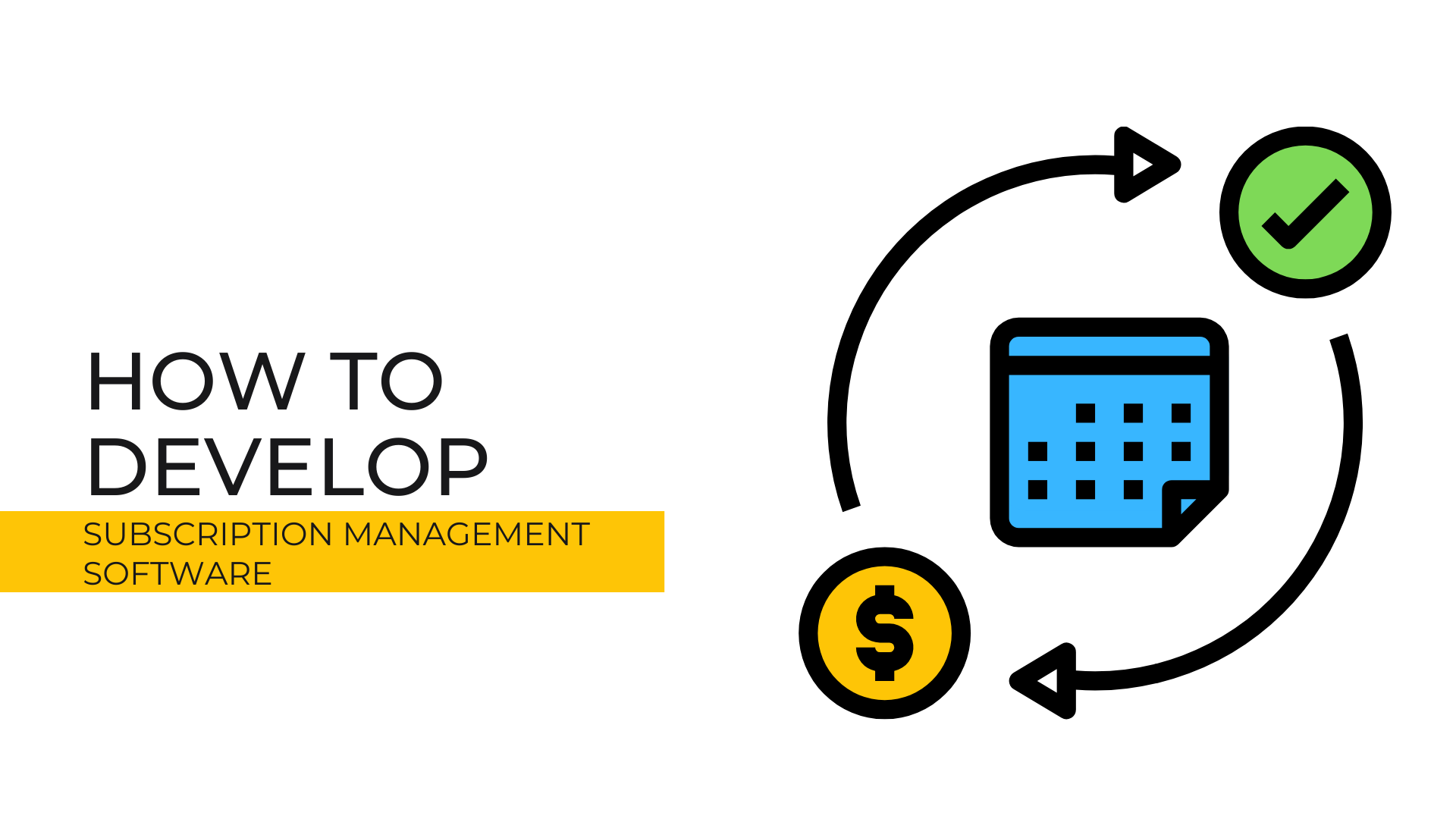
We bet, that anyone, as well as you, has a subscription to at least one streaming service like YouTube, Netflix, Spotify, etc.
It is hard to deny that the most popular services of the modern era are subscription-based and commonly use IT outsourcing for better results.
As a matter of fact, proposing your assistance using an innovative digital subscription billing monetization model has switched from a trend to an almost must-have feature.
For instance, there is a number of various streaming platforms like Netflix or YouTube, which are proposing extended or even basic functionality for a small subscription fee, paid each month.
Alternatively, there is a software subscription in the field of software development, which allows you to use ready-made third party apps accordingly, or even proposes software development as a service in some cases.
In other words, a Subscription Management System is a type of software, which is essential nowadays.
Regardless of your purposes for using it: whether you are going to implement subscription services in your product, or are willing to create one as a service for other product companies - it is always a great idea for a potential startup.
Yet, there is a number of questions, related to this idea. For example, what is Subscription Management Software, how does it work, what are the benefits of owning one, what do you need to develop an SMS, how to hire app developers for such task, etc?
Therefore, before discussing how to develop Subscription Management Software on your own, let’s consider all the related details and try to answer some of the foregoing questions.
What is Subscription Management Software?
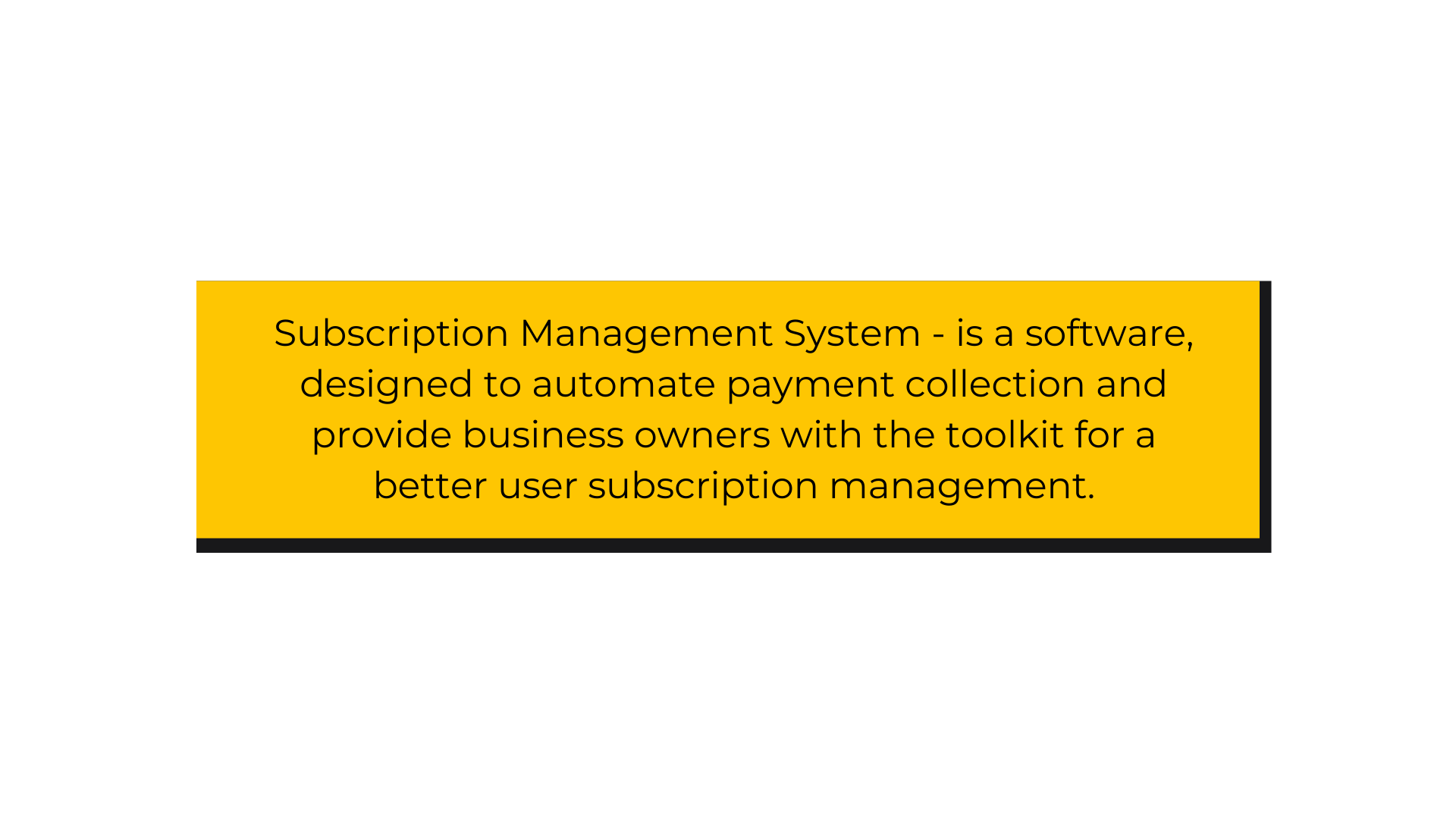
Frankly speaking, the name speaks for itself.
It is a type of software, designed specifically to enable the subscription management process on a code level and improve the overall experience for both service providers and their clients.
Subscription Management, on the other hand, is all about managing and tracking the status of a client’s subscription, its terms, status, etc.
Originally, it included simply just a few aspects, mainly targeted at the payment status: whether the user paid for the next month, or didn’t.
However, just like any other activity or process, it evolved into a new form, gradually expanding the functionality and taking into account new metrics and parameters.
Such solutions are transforming into a whole discipline with the possibility to give statics on various activities, gathering feedback, etc.
To make it simple, the modern subscription lifecycle management process is a much broader concept, which now includes statistics, feedback, and user experience, as well as some other advanced features, in addition to crediting payment.
Why Does Software Subscription Matter?
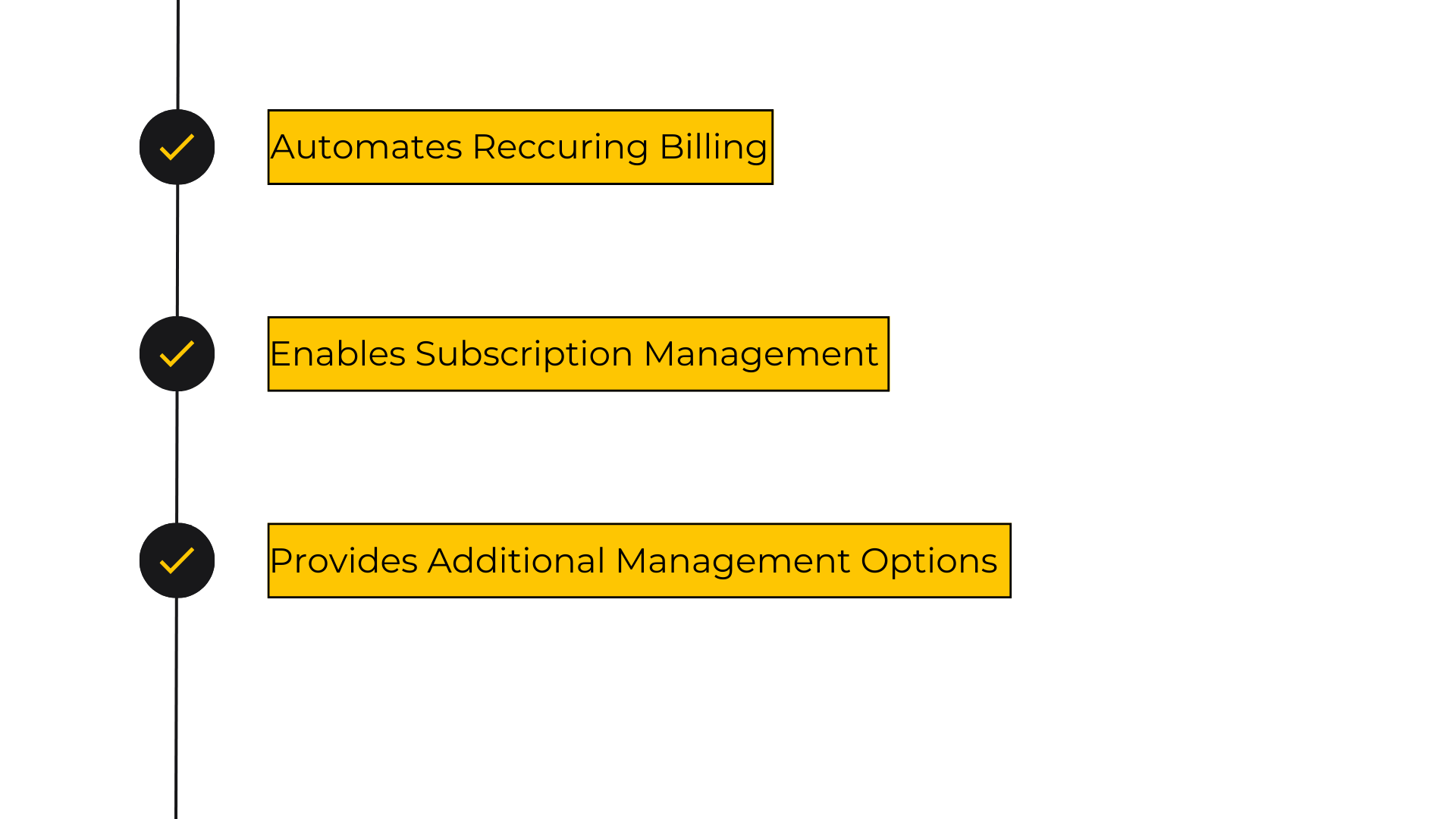
Actually, the answer is simple: it has become not only an essential instrument for the product owners. Management system significantly boosts and improves their control over various operations, related to subscription processes.
It also gives them numerous tools, which can upscale the overall usability and administration, increasing the number of usage purposes.
To do so, various product owners regularly aim to customize different B2B subscription management software solutions or even to create their own ones, if third-party software can’t provide them with the required functionality.
Eventually, subscription management SaaS software development allows to automate numerous processes, saving time and effort, which can be spent on the rest important tasks.
For a better illustration, let’s examine some of the modern best subscription software cases.
The List of Most Popular Subscription SaaS Solutions
Benefits of Subscription Management SaaS
Despite the fact, that developing your own Subscription Management Software is always an option, it is much easier and preferable to integrate a ready-made software solution.
Apart from obvious reasons like it is faster and cheaper, does not require a big offshore software development team, etc, it also has some more unobvious benefits.
Clearly, there is a wide range of various ready-to-use B2B subscription management solutions on the market, which makes it more competitive.
So, such IT vendors and software providers are interested in constant improvements to their products.
In addition to better performance or some advanced settings, they also take care of extra third-party implementations like extra payment collection gateway, various supplemental tools or instruments.
Such solutions can also integrate innovative software technologies, usage tracking possibilities, customer data security, extended ability to manage subscriptions, revenue recognition, and so on.
Finally, using Subscription Management Software as SaaS gives a chance for you as a client to avoid the need to maintain this type of software or hire app developers, and allocate resources in a more efficient way.
Talking about the most popular and useful B2B subscription management software, it is possible to highlight a few products.
Stripe Billing
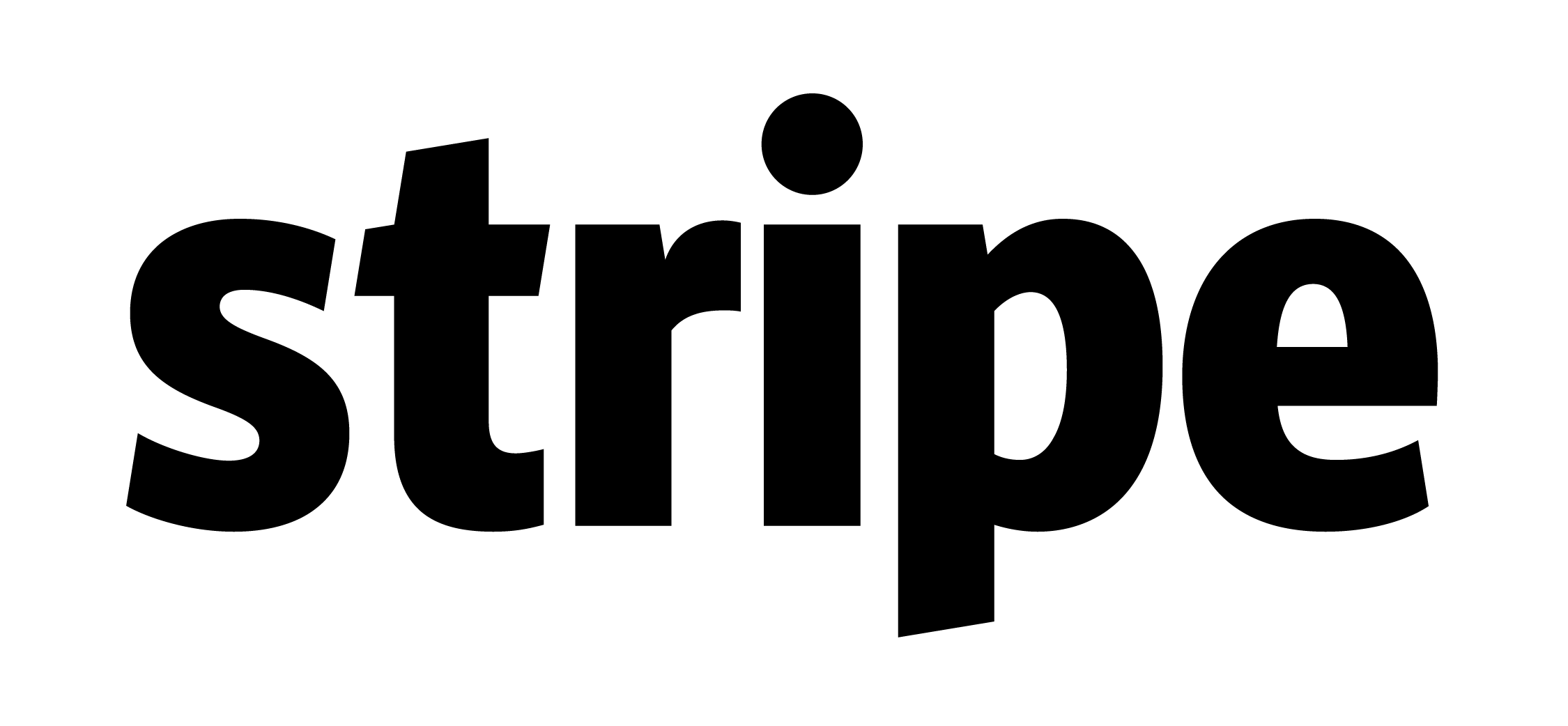
Stripe is probably one of the most popular and well-known financial software infrastructures, which works as a service at the moment.
Proposing a wide range of different services and settings for the companies to choose from, it covers a vast majority of financial services you might need for a great experience in managing and monitoring activities, related to this sphere.
Among other decent advantages of this service are the possibilities to customize software and adjust it according to your needs as well as the ‘white label” option.
ChargeBee

Chargebee is another great example of subscription management SaaS software development and an industry leader.
It helps its clients not only to track and set up subscription-based payments but provides them with numerous tools and extra services.
This can help to manage the finances more effectively, maximizing the revenue from subscribers.
Clearly, these two examples are by far not the final list of software customer subscriptions.
In fact, there are plenty of alternatives like Sage Intacct, Billsby, etc.
Each of them is unique in its own way, proposing a distinctive list of subscription management software features, and usage approaches, and has its own strengths and weaknesses.
Pros and Cons of Subscription Management Software
Advantages of Developing Own Recurring Billing Software
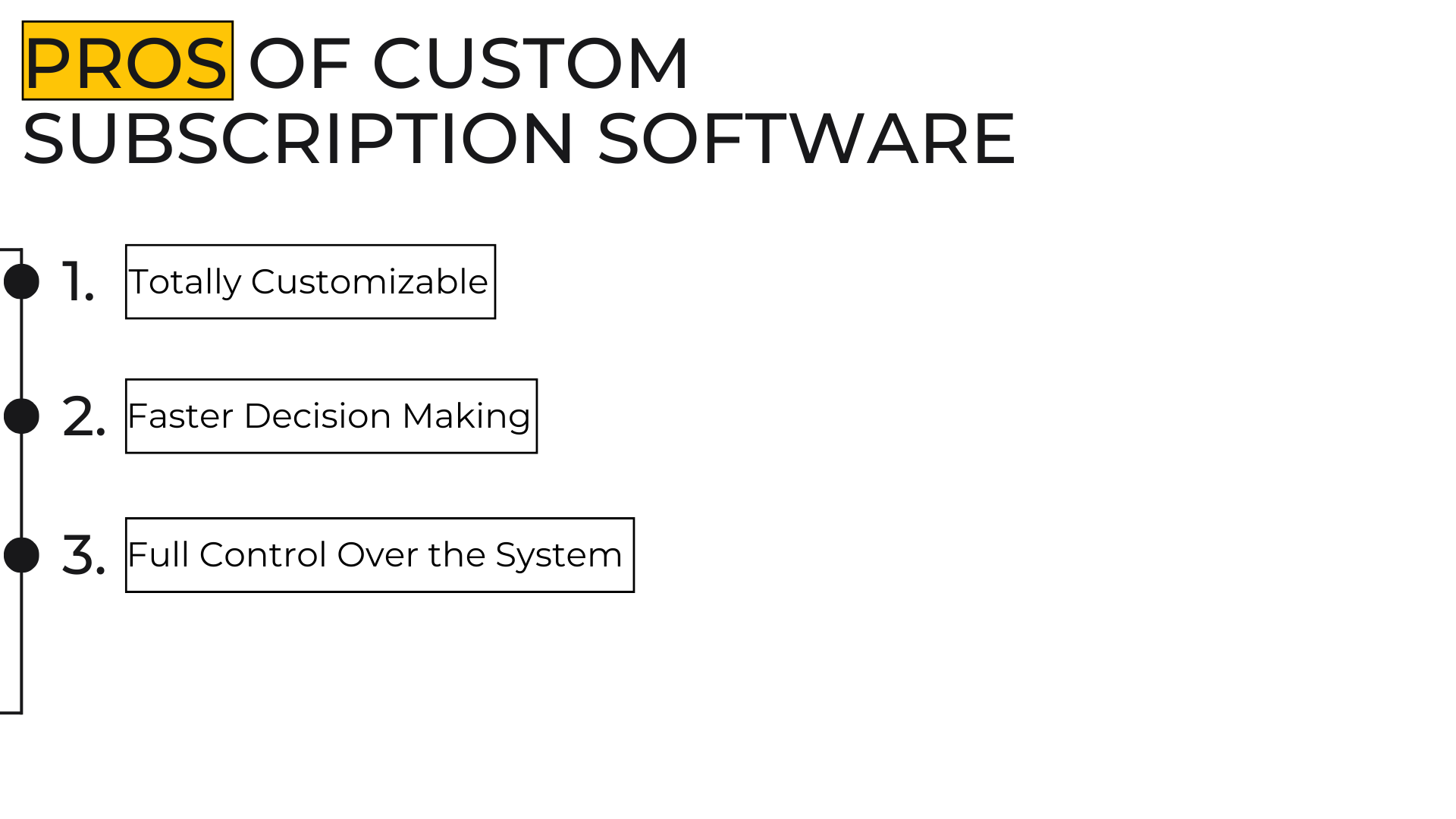
Obviously, there are some benefits to developing subscription management software on your own.
Customization
First of all, it is a possibility to develop a totally customizable system, which will meet all your requirements, tech stack, etc.
Faster Decision Making
For instance, you can simply implement changes within the code with no additional challenges, and as soon as possible.
Instead of asking your IT vendor or software provider to implement changes on their side and get confirmation and agreement on such changes, you can simply delegate it to your offshore development team.
Full Control Over the System
Secondly, you will obviously have full control over this type of software, as well as won’t need to constantly communicate with third parties.
This can significantly decrease the number of administrative processes and, as a result, speed up some working aspects.
Still, developing a perfect subscription management software has a number of challenges as well.
Subscription Management Software Development Challenges
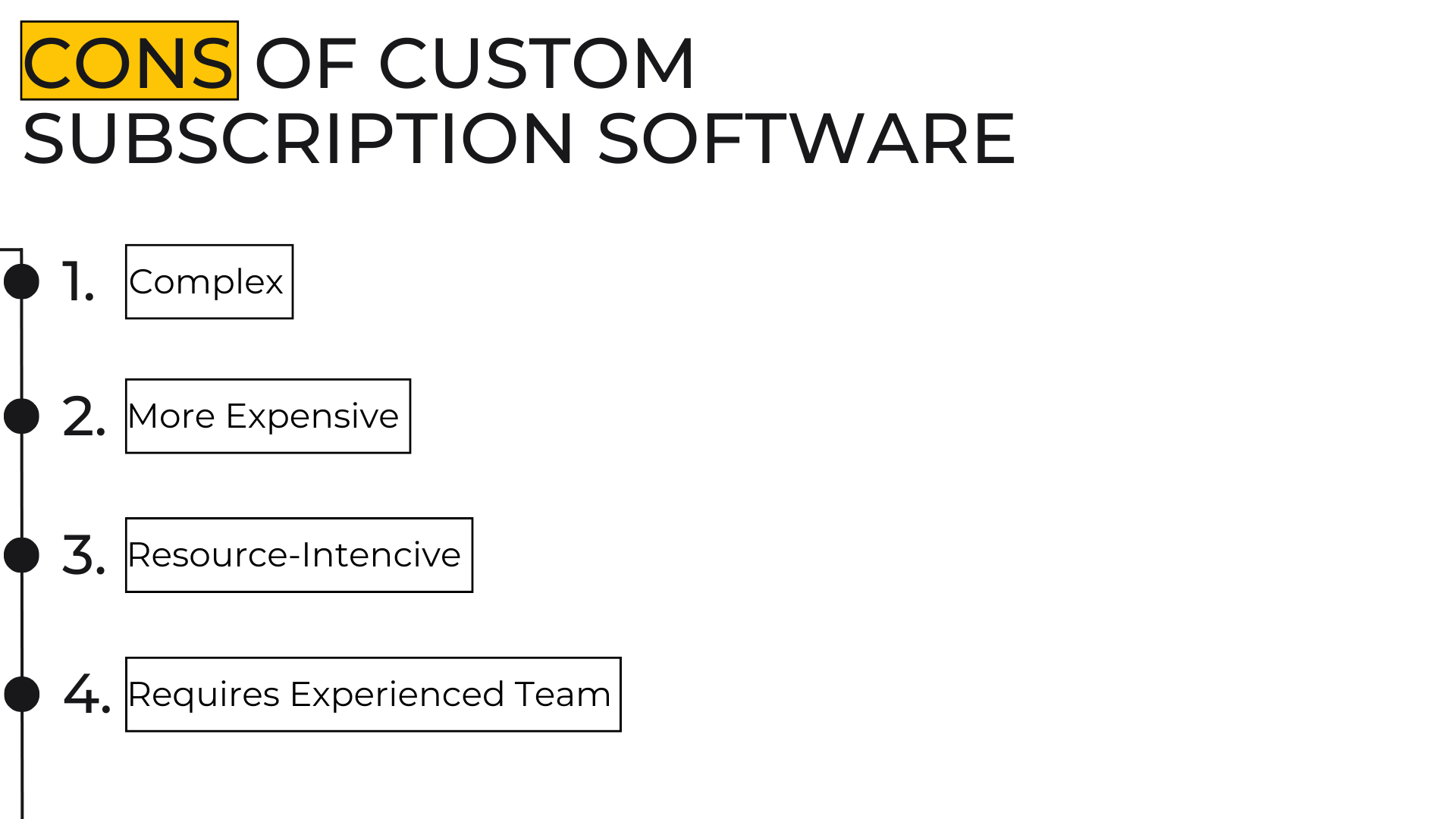
Unfortunately, the development of this type of software has a lot of challenges to deal with.
Scalable and Complex
For example, it obviously requires an experienced remote development team, which is familiar with numerous technologies.
It is also a very scalable and complex software, which includes countless processes to develop and maintain.
To cut a long story short, it is a very difficult software product, and its development has a lot of various requirements.
Besides, it will cost much more, compared to the possibility of using a ready-made solution.
Maintainance and QA
Finally, the development itself is just half of the work to be done.
To be clear, after the software was designed and created, you will still have to maintain it, perform bug-hunting procedures, take care of overall quality assurance, and consider future potential integrations and functionality extensions.
Summing up all the above, it is definitely possible to design and develop a subscription management software on your own.
Still, it is preferable to consider some ready-made subscription management software development as a service, which can be easily integrated within your project in no time.
Alternatively, you can develop your own subscription management software as a product, i.e. propose it for the potential clients as subscription-based software for financial management.
So, what are the steps to make, in case, you want to create an SMS, or integrate one?
How to Develop a Subscription Management Software
Let’s pretend that you are willing to develop a B2B SaaS subscription management software, just like the ones, mentioned before.
In this case, you need to choose a tech stack, find and hire a dedicated development team, or gather an in-house group of software engineers, and define your subscription management software features.
As we said before, each such software has its unique and specific list of key features.
However, it does not mean, that it is impossible to specify such options, which are common and must-have for this type of software product.
Subscription Management Software Key Features
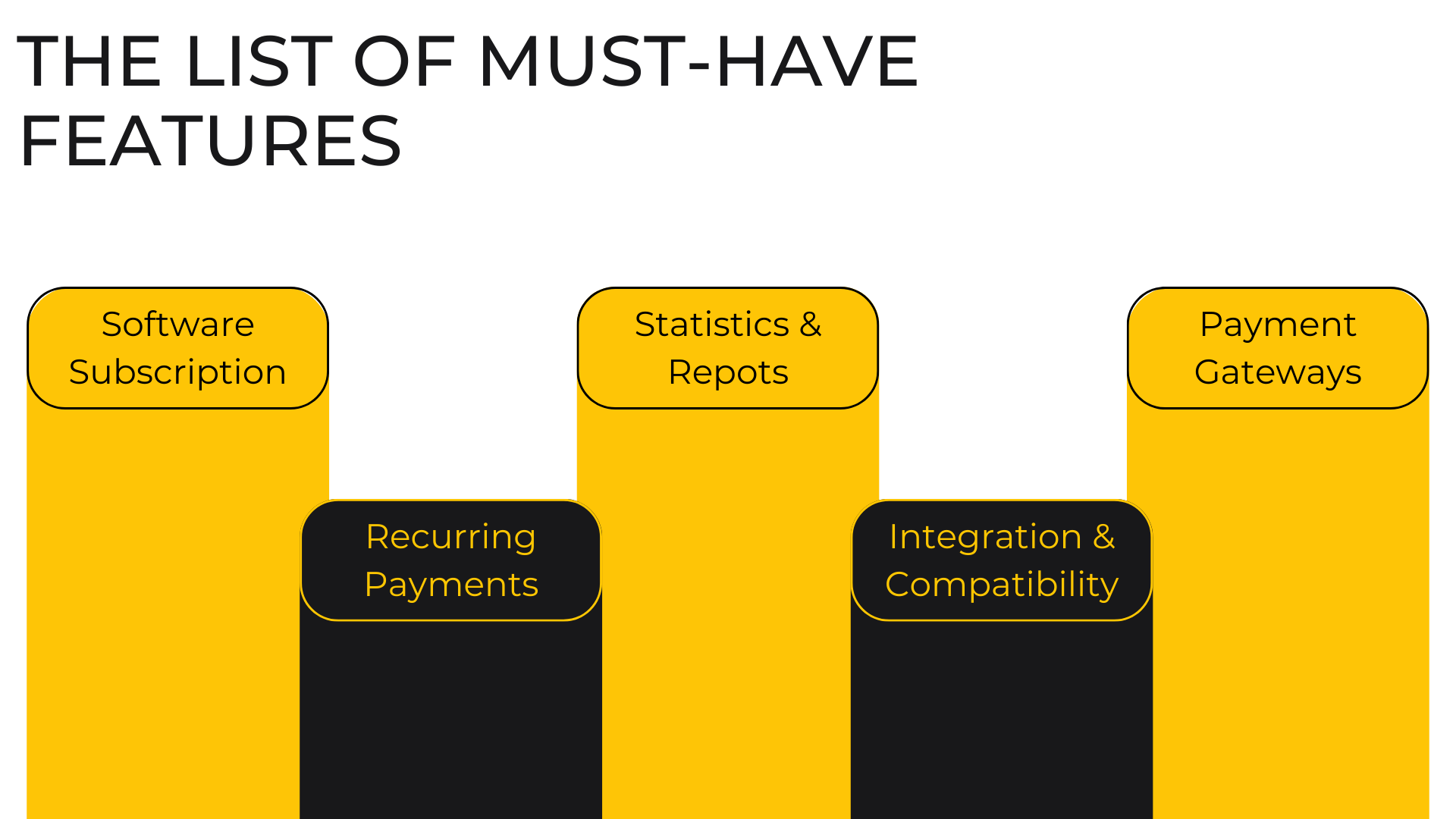
Software Subscription Management
Obviously, the most important and common functionality - is the possibility to manage customer subscriptions.
To be more precise, it includes not only having a list of users, who have a subscription, but various tools, which allow your offshore development team to track or find a specific user and their content access level, i.e. what type of subscription they have.
Additionally, it is preferred to have a list of various access levels, which will allow you to provide your future clients with a variation of different types of payments:
- Ad free version,
- Family-oriented,
- premium content, etc.
Also, you will have to ensure the most efficient working and interaction with your service in order to make it as user-friendly as possible.
Among some other optional features, it is possible to add some extra functionality like the possibility to unsubscribe in one click, limitation of devices, where users can log in, etc.
Recurring Payments
Ensuring recurring billing is a must-have feature of any best subscription management software.
Obviously, apart from the possibility of managing subscriptions, it is important to enable recurring billing because subscription business revenue management is based on constant payments.
They are repeated for a specific period of time:
- monthly payment,
- annual,
- daily etc.
It depends on subscription lifecycle and SaaS billing and pricing models.
Besides, don't forget about ensuring billing details, as well as the possibility to stop recurring billing on demand.
To sum up, recurring revenue is one of the most important aspects, which define the overall success of any subscription management platform and subscription based services.
Therefore, it is important not only to accept payment but provide your customers with the possibility to automate payments.
Statistics and Reports
Another vital feature - is to enable the possibility for your clients to track subscriptions and monitor not only the status of a particular user’s subscription.
On top of that, it helps to gather data and analyze it, providing the clients with general statistics on user engagement, subscriptions vs unsubscribes ratio, and the rest key metrics for business analysis.
Likewise, don’t forget about financial statistics, which can help your customers to better understand how profitable their product is, as a result - improving customer relationships.
Integration and Compatibility
Third parties are essential in modern software development. Nowadays, a wide range of various software companies are producing countless solutions for each possible industry.
Thus, instead of developing something from scratch, it is possible to simply integrate some out-of-box solutions like API integrations, designed for a very specific task.
Third Party Apps
Subscription management tools are highly complicated and complex software.
Taking into account that there is plenty of popular subscription management software, it is very likely that you will need the ability to implement changes and new features as fast as possible to stay competitive.
Therefore, it is crucial to ensure that the technologies you are using for the development can be easily combined with third-party software. This must be taken into account already in the planning stage.
Otherwise, you won’t be able to use the full potential of your recurring billing platform without the need to make deep changes in your IT infrastructure.
Payment Gateways
Last but not least - it is impossible to imagine a subscription management software, which does not provide its clients with integrated payment methods, supports online payments, takes care of payment processing, etc.
Clearly, they can vary, depending on your goals or even the region, your target audience is located in. Yet, each payment system has its own APIs or other software solutions to integrate.
Therefore, after getting to know your target audience - decide what payment gateway to deploy.
Building Software Subscription with Incora
Summing up all the above, if you are willing to design and deliver high-quality recurring revenue management software, you will need an experienced software development consulting partner, just like Incora.
To be even fairer, even if you need to integrate a ready-made B2B SaaS subscription management solution like Stripe or ChargeBee, you will definitely have to collaborate with software engineers.
Our company has experience in working with various types of subscription management software, and a group of our niche-experienced developers is familiar with the FinTech industry and accounting software as well.
Hence, our company service is one of the best, when it comes to working with subscription software. To prove our point, before you will contact us, we propose you examine some of our case studies.
What’s your impression after reading this?
Love it!
1
Valuable
3
Exciting
1
Unsatisfied
2
FAQ
Let us address your doubts and clarify key points from the article for better understanding.
you may also like
Let’s talk!
This site uses cookies to improve your user experience. Read our Privacy Policy
Accept

Share this article